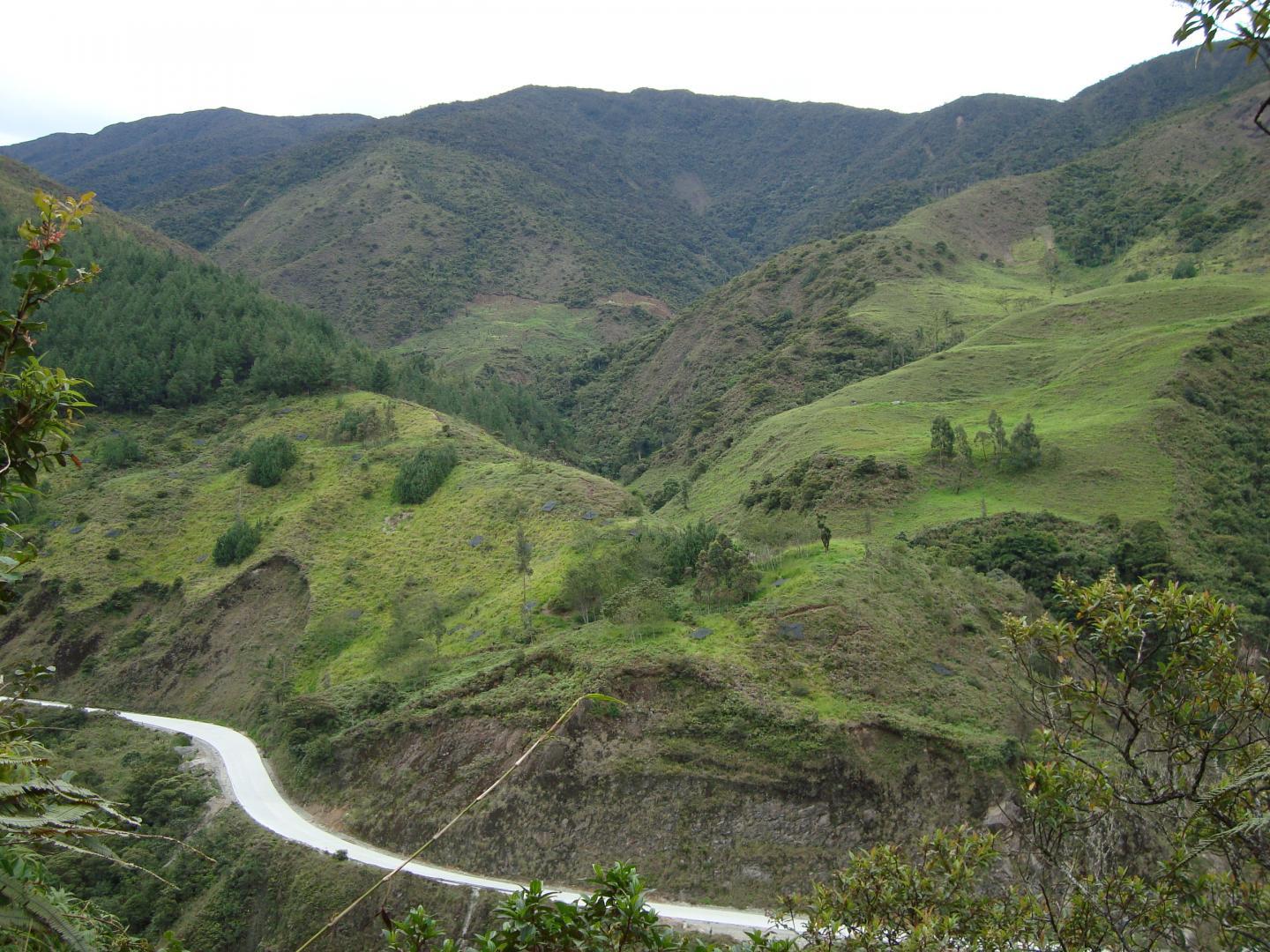Conservationists are always looking for ways to halt the pace of deforestation in tropical rainforests. One approach involves recultivating abandoned agricultural land. An international team* investigating this concept has just published its findings in Nature Communications. Working in the mountainous regions of Ecuador, the researchers found afforestation and intense pasturing to be particularly effective, clearly increasing the environmental and economic value of abandoned farmlands.
Every year, 130,000 square kilometers of rainforest disappear from the face of the earth - an area equivalent to the size of Greece. The majority of this land is cleared for agricultural development - even in tropical mountain areas. These fields are quickly overgrown with weeds, however. Bracken is particularly tenacious. It cannot be permanently eliminated using herbicides or by burning the land. As a result, farmers often abandon the land after a few short years and start clearing new areas of forest.
"This cycle has to be broken," explains Prof. Thomas Knoke from the Institute of Forest Management at Technische Universität München (TUM). Prof. Knoke is lead author of the study that has just been published. "We've been investigating whether this abandoned pasture land can be recultivated, and if so, how."

The land in the middle of the photograph is pasture. To the left of this is one large afforested area and several small areas planted with pine trees. The hills in the background are covered with native forest.
(Photo Credit: Michael Weber / TUM)
The team did not just look at economic benefit when evaluating the different concepts. For the first time, this study also took environmental and socio-cultural criteria into consideration, factoring in issues such as the amount of carbon dioxide and nitrogen assimilated by plants and soil, biomass production, soil quality, impact on climate, water management and acceptance among farmers.
Sustainable land use
The area under investigation (around 150 hectares) is located in the Ecuadorian Andes at an altitude of between 1,800 and 2,100 meters. The researchers looked at five different concepts:
- No land use - abandoned land is left to nature
- Afforestation - planting a native species of alder
- Afforestation - introduction of a non-native pine species
- Extensive pasturing - mechanical weed control followed by initial fertilization and land use
- Intense pasturing - chemical weed control and land use with regular fertilization
Afforestation with alder and pine species proved particularly sustainable. In addition, forested regions offer the best protection against erosion in the long term. "Our study also showed that afforestation with the native Andean alder had a much more positive impact on the climate and water balance than the other land use options," adds Prof. Jörg Bendix from Phillips-Universität Marburg.
Engaging the farmers - a key factor
Typical rainforest flora and fauna are also able to gradually recolonize afforested regions. Intense pasturing scored much higher on the ecological scale than extensive pasturing. Economic benefits stemmed from the sale of wood (afforestation) or the sale of meat and milk (pasturing). Alder plantations achieved the greatest financial returns.
A survey conducted among land users showed that the majority of livestock farmers also viewed afforestation as the best land use option due to the positive ecological balance and greater long-term earnings potential. "If we want recultivation concepts to be a success, the people using the land have to be engaged," elaborates Bendix.
Reference project for other tropical mountain regions
The sustainable land use concepts all come at a cost, however. Over a period of twenty years, farmers who do not use slash-and-burn techniques are exposed to an annual loss of earnings. This amounts to 87 dollars per hectare for afforestation and 100 dollars per hectare for intense pasturing. The researchers regard compensation for recultivation as an important incentive for encouraging famers to replant abandoned grazing land. In the long term, trade with CO2 certificates could also provide an additional source of income.
The researchers also believe that their study could be used as a reference for evaluating recultivation concepts in other tropical mountain forests, for example in Brazil or Africa. "Abandoned agricultural land is a huge resource that is not being harnessed," summarizes Thomas Knoke. "The German Research Foundation (DFG) is currently funding a number of projects that are working with farmers in Ecuador to implement the findings of the study," concludes Erwin Beck, professor at the University of Bayreuth and the man who started the project in Ecuador 17 years ago.
Source: Technische Universitaet Muenchen